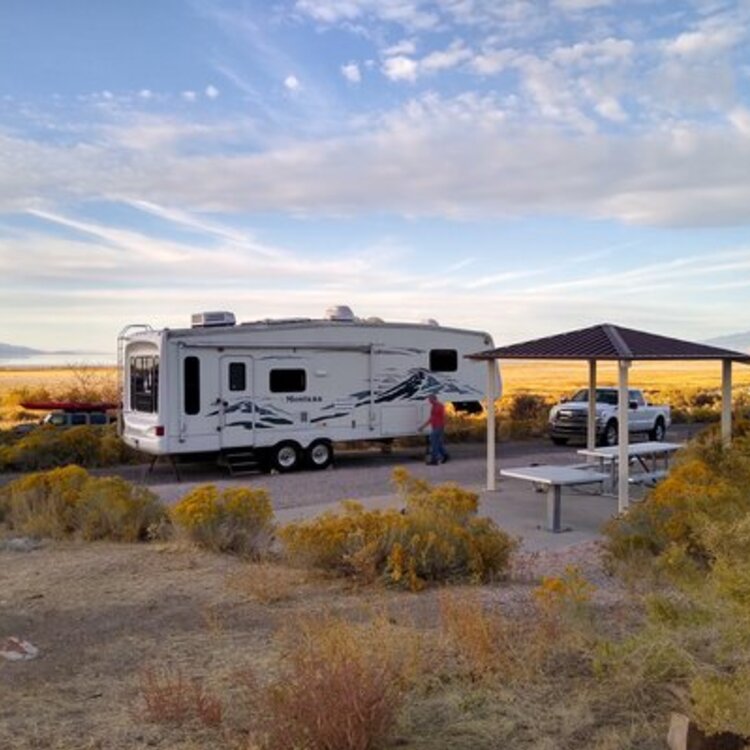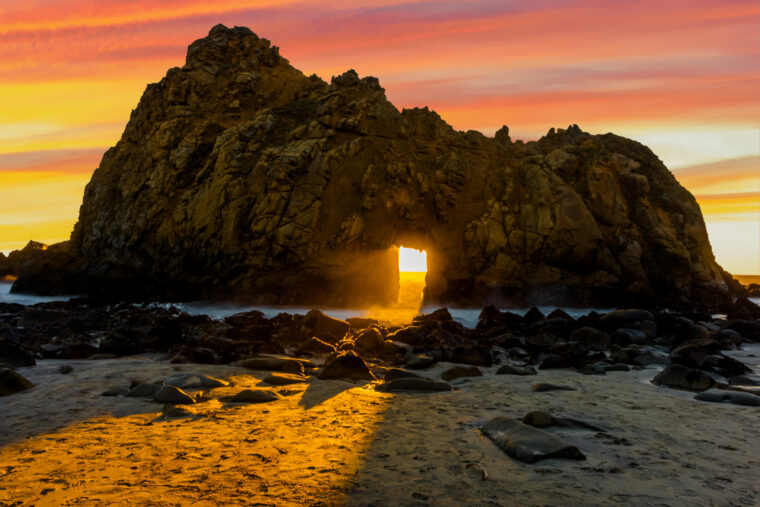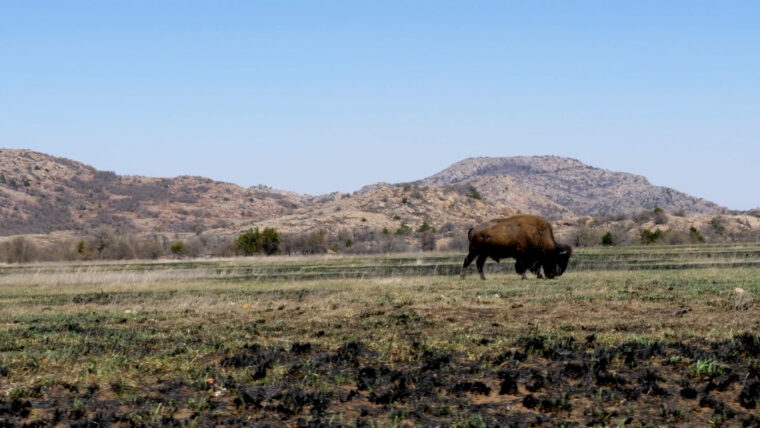For the record, the song “Home on the Range” isn’t quite accurate. The West isn’t where the buffalo roam and antelope play—those species don’t live on this continent. But it is where the American bison and pronghorn roam. Spend any time out here, and you’ll likely see them, along with countless other wildlife, geological treasures, and public lands.
These state parks in the West are always worth a detour.
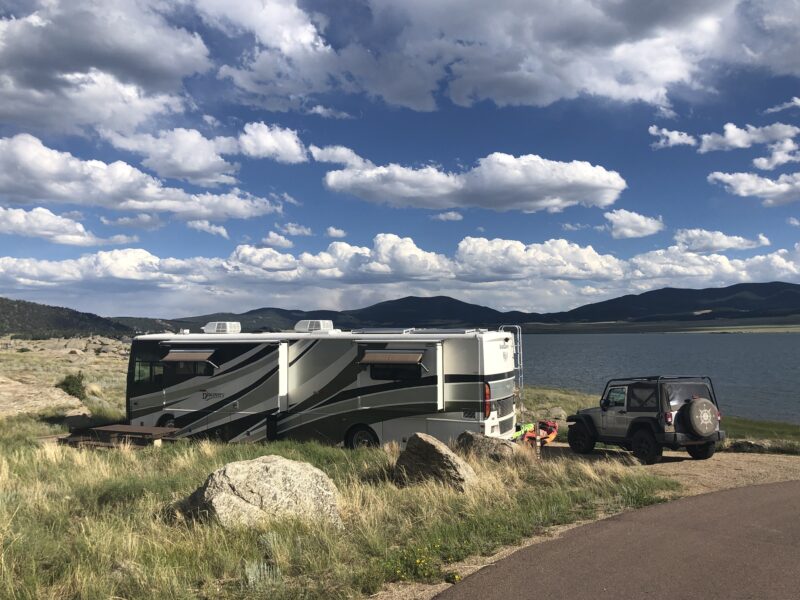
1. Eleven Mile State Park, Colorado
This reservoir on Colorado’s high grasslands might not be as iconically stunning as some of the state’s other destinations, but at 8,600 feet in elevation, Eleven Mile State Park is a true gem away from the bustle. The waters are particularly coveted by anglers, and throughout the summer they’re also dotted with kayaks, sailboats, and motor boats.
On shore, there’s hiking and biking among pronghorn, meadowlarks, and bald eagles, plus a Junior Ranger program for kids. The winters can be harsh, but that doesn’t deter visitors from ice fishing, ice skating, and cross-country skiing. Eleven Mile is also a great basecamp, within an hour of Florissant Fossil Beds National Monument, the Royal Gorge and its adventure park, rafting on the Arkansas River, Pikes Peak, Cripple Creek, Mueller State Park, and the Gold Belt Scenic Byway.
Where to Camp
There are 325 sites in the park within nine campgrounds around the lake. Amenities range from backcountry hike-in tent sites to electric lakeshore RV sites. For the latter, head to Rocky Ridge Campground, loops A, B, and D (52 sites have 30-amp power). There’s a marina with boat and ice fishing equipment rentals. Some campsites are open year round, but the boat ramps close for the winter. Dogs are allowed, but not in the water (note that humans are also not allowed in the water, just on top of it). Reservations are mandatory, and there is no self check-in.
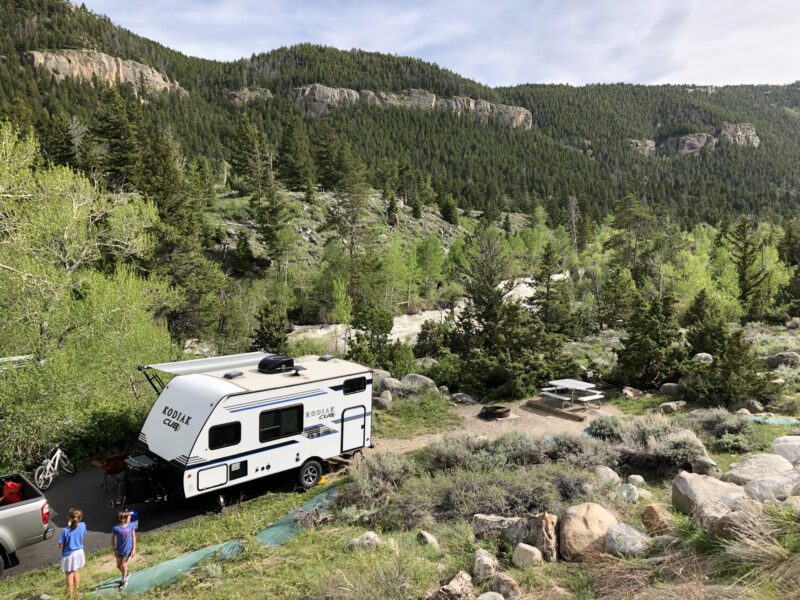
2. Sinks Canyon State Park, Wyoming
The middle fork of the Popo Agie River meanders through Sinks Canyon State Park until it plunges into a limestone cavern and disappears. It resurfaces 400 yards below, forming a peaceful pool that’s home to enchantingly large rainbow trout (some up to 12 pounds).
Besides the geologic novelty, the canyon is a mecca for rock climbing. The single-track mountain bike trails and hiking trails are also outstanding, with paths ranging from flat pavement to rugged slopes. Nearby attractions include the town of Lander and its two Western-themed museums, a wild horse sanctuary, and the intensely wild Wind River Mountains.
Where to Camp
The park has 29 primitive sites within two campgrounds. Amenities include fire pits, picnic tables, vault toilets, seasonal water stations, and firewood. Most sites can only accommodate small campers/trailers or tents, but there are private campgrounds nearby with hookups and room for larger rigs. Other facilities include a visitor center and yurts. The campgrounds are dog friendly and open year round, but the water is turned off during the winter. Reservations can be made from May through September; otherwise all sites are on a first-come, first-served basis.
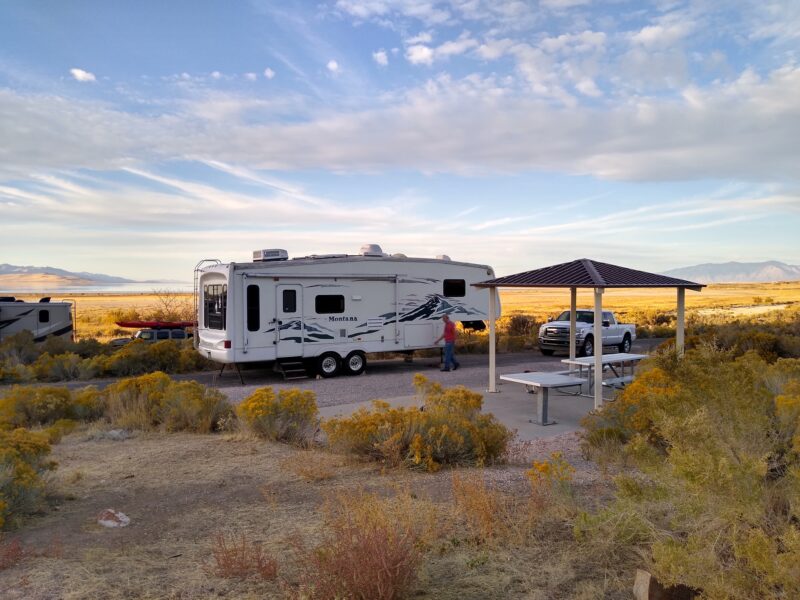
3. Antelope Island State Park, Utah
A causeway across the Great Salt Lake connects the mainland to Antelope Island State Park, the unofficial gateway to the far-reaching desert lands of the Great Basin. The island houses a delicate and intriguing ecosystem, rife with wildlife, including bighorn sheep, pronghorn, mule deer, white pelicans, raptors, and shorebirds. It’s also home to 600 free-ranging bison.
The drive through the park is pleasant, but the most scenic overlooks are along 45 miles of hiking trails, most of which are open to mountain biking as well. Other draws include horseback and e-bike tours, a historic ranch house, visitor center, interpretive exhibits, and a restaurant.
Until recently, the island was also known for its beaches and water sports, but the Great Salt Lake has dried so much that the marina is no longer usable. Nearby attractions include Salt Lake City, the Bonneville Salt Flats, and the Wasatch Mountains.
Where to Camp
Bridger Bay Campground has 37 sites with water and electric, another 26 primitive sites, plus showers and flush toilets. White Rock Bay Campground has 20 primitive sites and pit toilets, and there are another nine hike-in backcountry sites scattered about. The park is pet friendly and part of the International Dark-Sky Association. Reservations are recommended and must be made 2 days prior to arrival, otherwise sites are offered on a first-come, first-served basis.
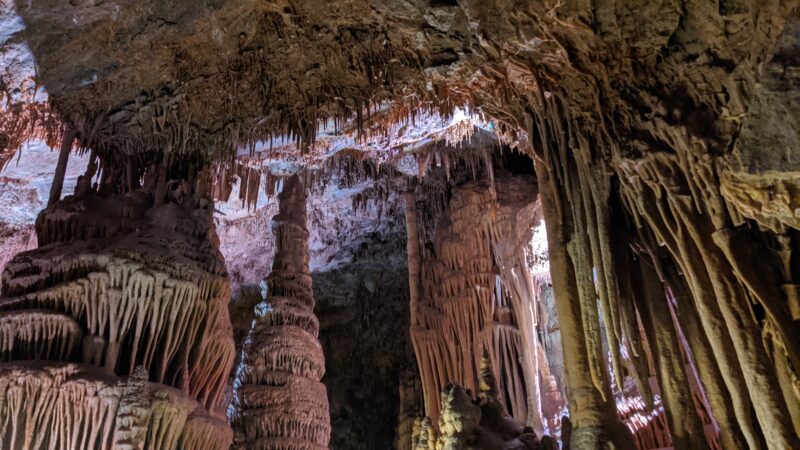
4. Lewis and Clark Caverns State Park, Montana
It takes about 2 hours to tour the stalactites, stalagmites, and flowstone ribbons of Lewis and Clark Caverns State Park‘s limestone catacombs. After that, there are 10 miles of hiking trails, plus biking and bird watching to round out the visit.
The caverns here are some of the largest in the Northwest, and since they’re always around 50 degrees Fahrenheit, they’re a welcoming activity on a hot day. So is kayaking and canoeing on the Jefferson River, which flows along the park boundary. Other activities include a visitor center with interpretive displays, a gift shop, and food concessions. It’s not far off of I-90, between Butte and Bozeman.
Note: You must take a tour to see the caves, and buying tour tickets in advance is recommended during the summer. The caverns are also home to Townsend’s big-eared bats, and thus masks are required in areas with bat colonies to help prevent stresses on them like exposure to COVID-19.
Where to Camp
There are 40 sites in the campground, three of which have 50-amp electric (the rest are primitive with a fire ring and table). Other amenities include a tipi and cabins, additional hiker/biker sites, a dump station, showers, flush toilets, drinking water, a playground, and picnic areas. The cabins and campground are open year round, but water and cave tours are only available May through September. Reservations are recommended in the summer. The park is dog friendly, except for inside the caverns.
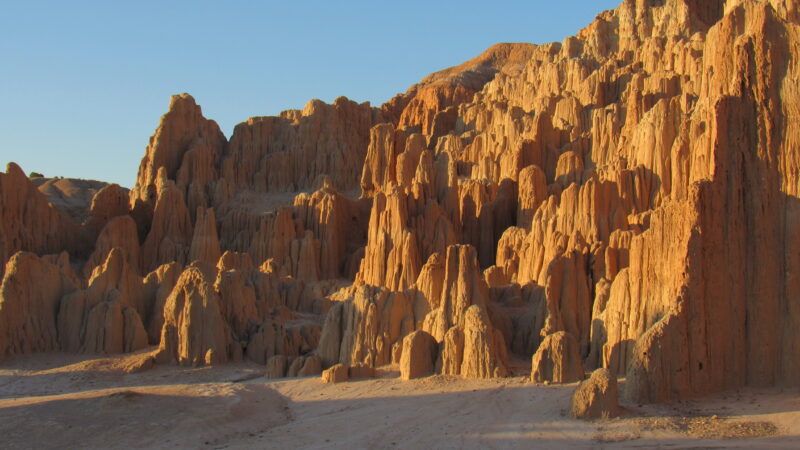
5. Cathedral Gorge State Park, Nevada
Today Cathedral Gorge State Park is a peaceful place to be intimate with the remote Nevada desert. But the Tolkien-esque bentonite buttresses and spires tell the tale of their violent creation, when a volcanic caldera exploded, blanketing the area with hundreds of feet of ash. Over tens of millions of years, wind and water carved out a landscape through that ash that is a visual wonderment—and a photographer’s paradise.
There are two trails on which to wander through geologic time. One is a 1-mile-long nature loop with interpretive signs. The other is 4 miles, and passes cave-like formations that make it worth the extra effort. Also in the park is a seasonal visitor center and picnic area. Nearby attractions include the town of Panaca and its Warm Springs swimming lake, and the town of Pioche.
Where to Camp
The park campground has 22 sites with electricity, covered picnic areas, and a grill. Amenities also include showers, flush restrooms, a group camping area, playground, and amphitheater. It’s currently first come, first served, but in 2023 Nevada will begin a reservation system for state parks. The park and campground are open year round and are pet friendly.



